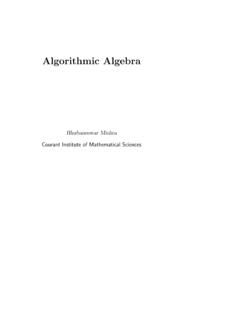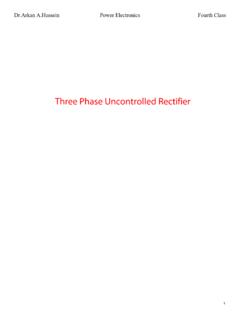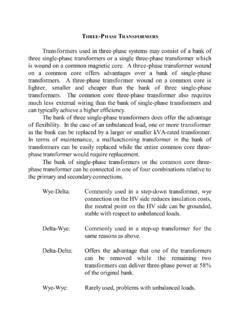Transcription of Removing Camera Shake from a Single Photograph
1 Removing Camera Shake from a Single Photograph Rob Fergus1 Barun Singh1 Aaron Hertzmann2 Sam T. Roweis2 William T. Freeman1. 1 MIT CSAIL 2 University of Toronto Figure 1: Left: An image spoiled by Camera Shake . Middle: result from Photoshop unsharp mask . Right: result from our algorithm. Abstract depth-of-field. A tripod, or other specialized hardware, can elim- inate Camera Shake , but these are bulky and most consumer pho- tographs are taken with a conventional, handheld Camera . Users Camera Shake during exposure leads to objectionable image blur may avoid the use of flash due to the unnatural tonescales that re- and ruins many photographs. Conventional blind deconvolution sult. In our experience, many of the otherwise favorite photographs methods typically assume frequency-domain constraints on images, of amateur photographers are spoiled by Camera Shake .
2 A method or overly simplified parametric forms for the motion path during to remove that motion blur from a captured Photograph would be Camera Shake . Real Camera motions can follow convoluted paths, an important asset for digital photography. and a spatial domain prior can better maintain visually salient im- age characteristics. We introduce a method to remove the effects of Camera Shake can be modeled as a blur kernel, describing the cam- Camera Shake from seriously blurred images. The method assumes era motion during exposure, convolved with the image intensities. a uniform Camera blur over the image and negligible in-plane cam- Removing the unknown Camera Shake is thus a form of blind image era rotation. In order to estimate the blur from the Camera Shake , deconvolution, which is a problem with a long history in the im- the user must specify an image region without saturation effects.
3 Age and signal processing literature. In the most basic formulation, We show results for a variety of digital photographs taken from the problem is underconstrained: there are simply more unknowns personal photo collections. (the original image and the blur kernel) than measurements (the observed image). Hence, all practical solutions must make strong CR Categories: [Image Processing and Computer Vision]: prior assumptions about the blur kernel, about the image to be re- Enhancement, [Artificial Intelligence]: Learning covered, or both. Traditional signal processing formulations of the problem usually make only very general assumptions in the form Keywords: Camera Shake , blind image deconvolution, variational of frequency-domain power laws; the resulting algorithms can typi- learning, natural image statistics cally handle only very small blurs and not the complicated blur ker- nels often associated with Camera Shake .
4 Furthermore, algorithms 1 Introduction exploiting image priors specified in the frequency domain may not preserve important spatial-domain structures such as edges. Camera Shake , in which an unsteady Camera causes blurry pho- tographs, is a chronic problem for photographers. The explosion of This paper introduces a new technique for Removing the effects of consumer digital photography has made Camera Shake very promi- unknown Camera Shake from an image. This advance results from nent, particularly with the popularity of small, high-resolution cam- two key improvements over previous work. First, we exploit recent eras whose light weight can make them difficult to hold sufficiently research in natural image statistics, which shows that photographs steady. Many photographs capture ephemeral moments that cannot of natural scenes typically obey very specific distributions of im- be recaptured under controlled conditions or repeated with differ- age gradients.
5 Second, we build on work by Miskin and MacKay ent Camera settings if Camera Shake occurs in the image for any [2000], adopting a Bayesian approach that takes into account uncer- reason, then that moment is lost . tainties in the unknowns, allowing us to find the blur kernel implied by a distribution of probable images. Given this kernel, the image Shake can be mitigated by using faster exposures, but that can lead is then reconstructed using a standard deconvolution algorithm, al- to other problems such as sensor noise or a smaller-than-desired though we believe there is room for substantial improvement in this reconstruction phase. We assume that all image blur can be described as a Single convolu- tion; , there is no significant parallax, any image-plane rotation of the Camera is small, and no parts of the scene are moving rel- ative to one another during the exposure.
6 Our approach currently requires a small amount of user input. Our reconstructions do contain artifacts, particularly when the Heavy-tailed distribution on image gradients above assumptions are violated; however, they may be acceptable to 0. consumers in some cases, and a professional designer could touch- Log2 probability density up the results. In contrast, the original images are typically unus- able, beyond touching-up in effect our method can help rescue . shots that would have otherwise been completely lost. 2 Related Work Mixture of Gaussians fit Empirical distribution The task of deblurring an image is image deconvolution; if the blur 0. Gradient 50 100 150 200. kernel is not known, then the problem is said to be blind . For a survey on the extensive literature in this area, see [Kundur and Figure 2: Left: A natural scene.]
7 Right: The distribution of gra- Hatzinakos 1996]. Existing blind deconvolution methods typically dient magnitudes within the scene are shown in red. The y-axis assume that the blur kernel has a simple parametric form, such as has a logarithmic scale to show the heavy tails of the distribution. a Gaussian or low-frequency Fourier components. However, as il- The mixture of Gaussians approximation used in our experiments lustrated by our examples, the blur kernels induced during Camera is shown in green. Shake do not have simple forms, and often contain very sharp edges. Similar low-frequency assumptions are typically made for the input the sensor irradiance. The latent image L represents the image we image, , applying a quadratic regularization. Such assumptions would have captured if the Camera had remained perfectly still; our can prevent high frequencies (such as edges) from appearing in the goal is to recover L from B without specific knowledge of K.
8 Reconstruction. Caron et al. [2002] assume a power-law distribution on the image frequencies; power-laws are a simple form of natural In order to estimate the latent image from such limited measure- image statistics that do not preserve local structure. Some methods ments, it is essential to have some notion of which images are a- [Jalobeanu et al. 2002; Neelamani et al. 2004] combine power-laws priori more likely. Fortunately, recent research in natural image with wavelet domain constraints but do not work for the complex statistics have shown that, although images of real-world scenes blur kernels in our examples. vary greatly in their absolute color distributions, they obey heavy- tailed distributions in their gradients [Field 1994]: the distribution Deconvolution methods have been developed for astronomical im- of gradients has most of its mass on small values but gives sig- ages [Gull 1998; Richardson 1972; Tsumuraya et al.]
9 1994; Zarowin nificantly more probability to large values than a Gaussian distri- 1994], which have statistics quite different from the natural scenes bution. This corresponds to the intuition that images often con- we address in this paper. Performing blind deconvolution in this do- tain large sections of constant intensity or gentle intensity gradi- main is usually straightforward, as the blurry image of an isolated ent interrupted by occasional large changes at edges or occlusion star reveals the point-spread-function. boundaries. For example, Figure 2 shows a natural image and a Another approach is to assume that there are multiple images avail- histogram of its gradient magnitudes. The distribution shows that able of the same scene [Bascle et al. 1996; Rav-Acha and Peleg the image contains primarily small or zero gradients, but a few gra- 2005].
10 Hardware approaches include: optically stabilized lenses dients have large magnitudes. Recent image processing methods [Canon Inc. 2006], specially designed CMOS sensors [Liu and based on heavy-tailed distributions give state-of-the-art results in Gamal 2001], and hybrid imaging systems [Ben-Ezra and Nayar image denoising [Roth and Black 2005; Simoncelli 2005] and su- 2004]. Since we would like our method to work with existing cam- perresolution [Tappen et al. 2003]. In contrast, methods based on eras and imagery and to work for as many situations as possible, we Gaussian prior distributions (including methods that use quadratic do not assume that any such hardware or extra imagery is available. regularizers) produce overly smooth images. Recent work in computer vision has shown the usefulness of heavy- We represent the distribution over gradient magnitudes with a zero- tailed natural image priors in a variety of applications, including mean mixture-of-Gaussians model, as illustrated in Figure 2.












